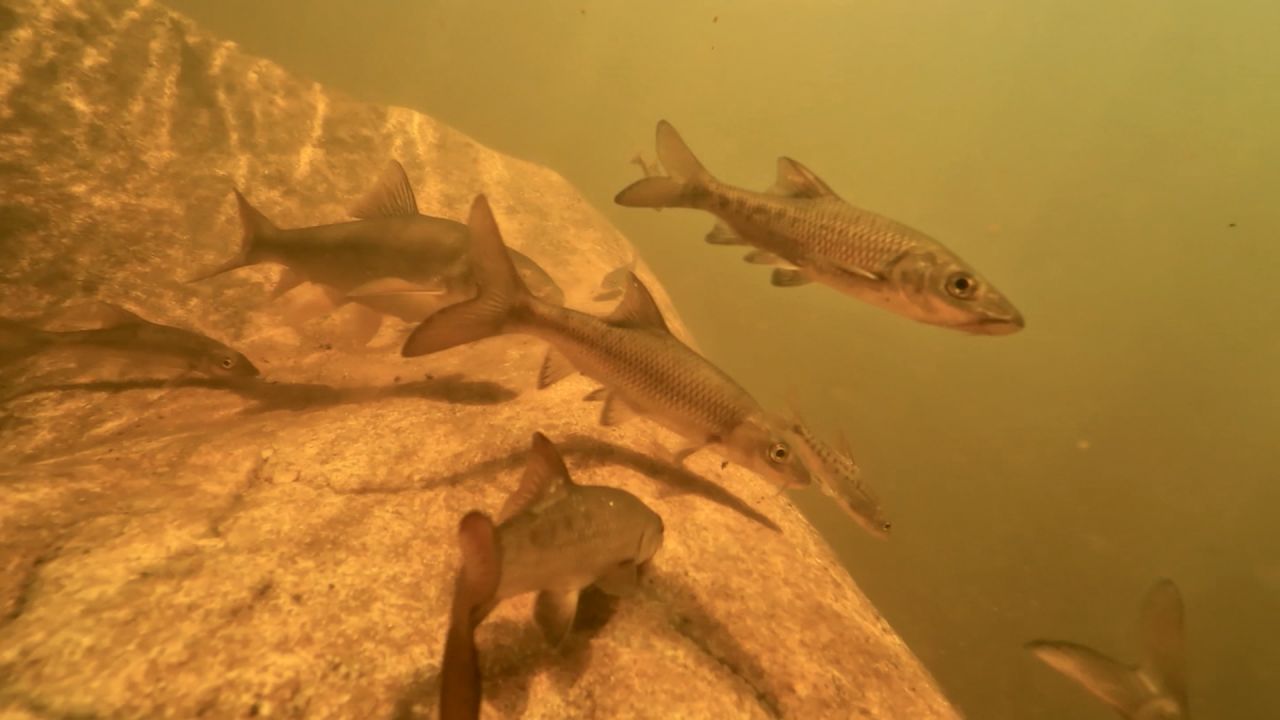Science
Conservationists Unite to Rescue South Africa’s Endangered Sandfish

The Clanwilliam sandfish, a fish species unique to South Africa’s Western Cape, faces a critical threat to its survival. Once abundant, these fish have seen their populations plummet over the past few decades due to habitat loss and environmental changes. Conservationists are now mobilizing efforts to restore this vital freshwater species, which is an important part of the region’s biodiversity.
Historically, the Clanwilliam sandfish was renowned for its impressive migrations, which would transform tranquil waters into swirling waves. According to CapeNature, the provincial conservation authority, these fish are now classified as endangered by the International Union for Conservation of Nature (IUCN). This classification reflects a significant risk of extinction if immediate action is not taken.
Efforts to Restore the Species
In response to the alarming decline of the sandfish, various conservation groups are working tirelessly to implement restoration programs. One such initiative involves habitat rehabilitation, which aims to improve water quality and restore natural habitats in the rivers where the sandfish thrive. These projects not only benefit the sandfish but also support other aquatic species that share the same environment.
Conservationists are also focusing on raising public awareness about the sandfish’s plight. Educational campaigns aim to inform local communities about the ecological importance of the species. By fostering a sense of stewardship among residents, these initiatives hope to encourage sustainable practices that protect the sandfish’s habitat.
Dr. Emily Smith, a leading biologist at CapeNature, emphasizes the importance of community involvement. “Engaging local communities is crucial for the long-term success of our conservation efforts,” she stated. “When people understand the role these fish play in their ecosystem, they are more likely to take action to protect them.”
Research and Monitoring
Scientific research is another critical component of the conservation strategy. Researchers are closely monitoring the sandfish populations to gather data on their breeding patterns, habitat preferences, and threats. This information is vital for developing effective management plans aimed at ensuring the species’ survival.
In 2023, the conservation efforts received a boost with funding from international environmental grants, enabling enhanced research and habitat restoration projects. These funds are being allocated to innovative technologies that track the movements of the sandfish, providing insights into their behavior and environmental needs.
The collaborative efforts between government bodies, NGOs, and local communities reflect a comprehensive approach to tackling the challenges faced by the Clanwilliam sandfish. As conservationists strive to reverse the decline of this unique species, they also highlight the broader need for environmental stewardship in South Africa.
The fate of the Clanwilliam sandfish serves as a reminder of the fragility of biodiversity. With continued dedication and support, there is hope for the recovery of this endangered species and the ecosystems it supports. The combined efforts of conservationists and communities will be crucial in ensuring that future generations can witness the remarkable migrations of the sandfish once again.
-

 Technology5 months ago
Technology5 months agoDiscover the Top 10 Calorie Counting Apps of 2025
-

 Health2 months ago
Health2 months agoBella Hadid Shares Health Update After Treatment for Lyme Disease
-

 Health3 months ago
Health3 months agoErin Bates Shares Recovery Update Following Sepsis Complications
-

 Technology4 months ago
Technology4 months agoDiscover How to Reverse Image Search Using ChatGPT Effortlessly
-

 Technology1 month ago
Technology1 month agoDiscover 2025’s Top GPUs for Exceptional 4K Gaming Performance
-

 Technology2 months ago
Technology2 months agoElectric Moto Influencer Surronster Arrested in Tijuana
-

 Technology5 months ago
Technology5 months agoMeta Initiates $60B AI Data Center Expansion, Starting in Ohio
-

 Technology5 months ago
Technology5 months agoRecovering a Suspended TikTok Account: A Step-by-Step Guide
-

 Health4 months ago
Health4 months agoTested: Rab Firewall Mountain Jacket Survives Harsh Conditions
-

 Lifestyle5 months ago
Lifestyle5 months agoBelton Family Reunites After Daughter Survives Hill Country Floods
-

 Technology4 months ago
Technology4 months agoHarmonic Launches AI Chatbot App to Transform Mathematical Reasoning
-

 Technology3 months ago
Technology3 months agoUncovering the Top Five Most Challenging Motorcycles to Ride





















